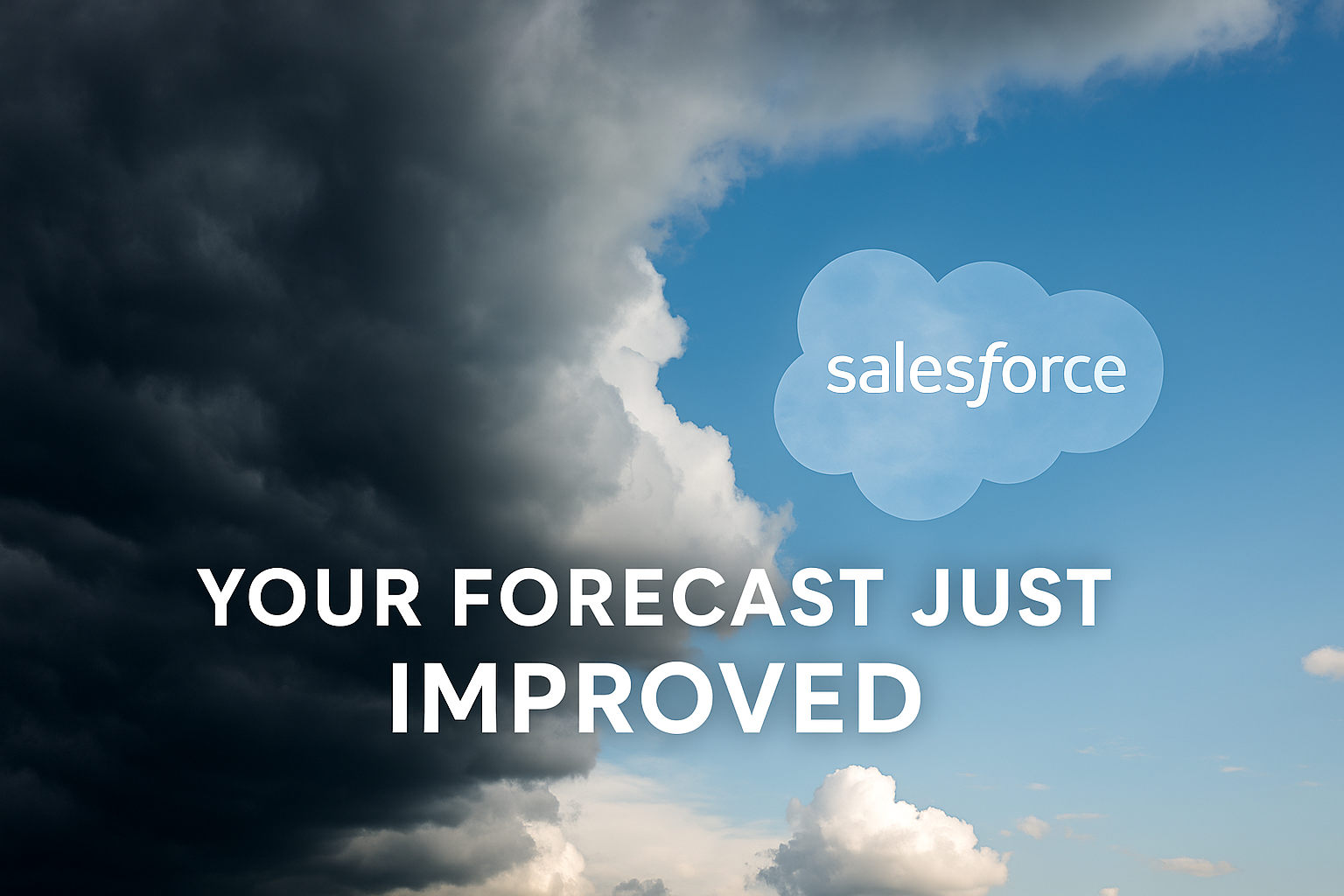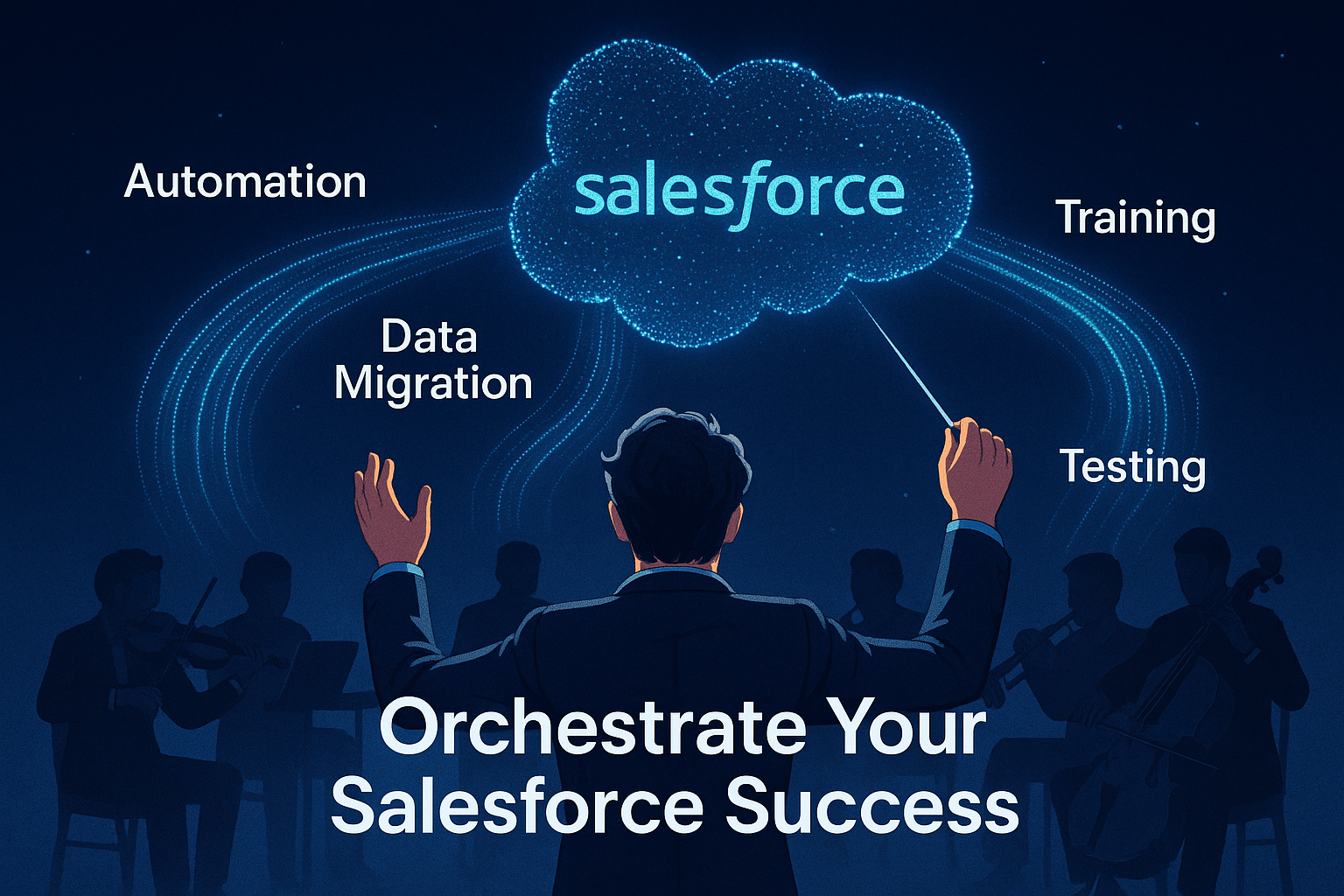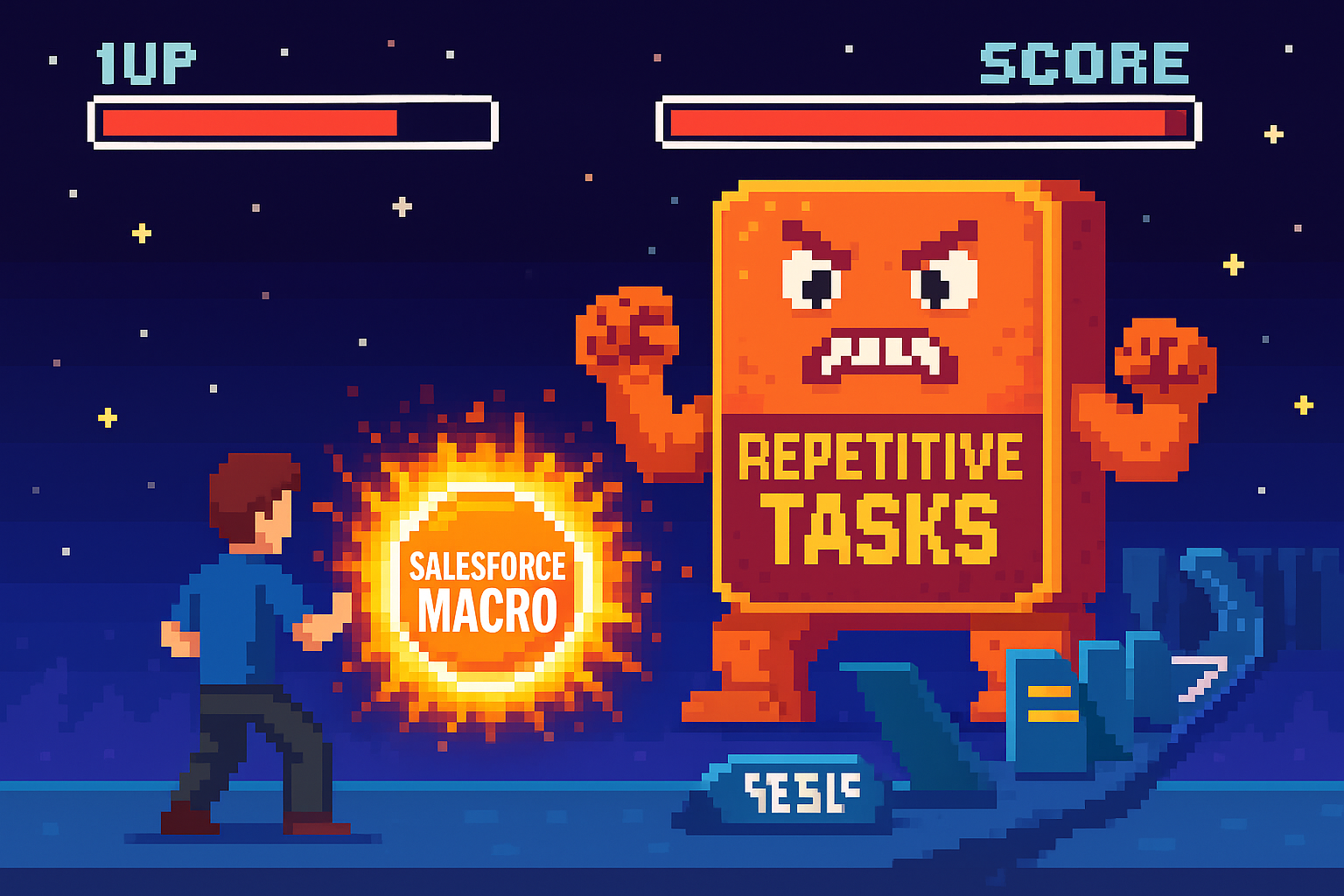 Salesforce isn’t a slow cooker. You can’t just turn it on, walk away, and expect a gourmet CRM six hours later. Between quarterly releases, evolving AI features, and that one “quick change” request that snowballs into a full-on deployment project, your org needs attention.
Salesforce isn’t a slow cooker. You can’t just turn it on, walk away, and expect a gourmet CRM six hours later. Between quarterly releases, evolving AI features, and that one “quick change” request that snowballs into a full-on deployment project, your org needs attention.
And if you’re the one responsible for keeping it running, you’ve probably heard someone say, “Can we just make one small tweak?”
That’s where Salesforce managed services come in. Not as a break-fix hotline, but as your ongoing pit crew. A proactive, steady partner that keeps Salesforce healthy, efficient, and actually working for your business, not against it.
Who Actually Needs Salesforce Managed Services?
If any of this sounds familiar, it might be time to bring in some backup:
- You’ve got a Salesforce backlog that’s starting to resemble a wish list.
- You want to test out Einstein Copilot or automation upgrades, but your team’s bandwidth is maxed out.
- Your “data cleanup day” has become a monthly ritual.
- You spend more time reacting to issues than planning improvements.
If you’re nodding along, don’t worry, your org isn’t broken. You’ve just outgrown the “DIY” phase.
For example, a quick Salesforce org health check can reveal where your system’s running smoothly and where a single automation might be tripping up performance.
The Hidden Costs of Avoiding CRM Optimization
Here’s the thing: standing still in Salesforce is never really standing still.
Every month you delay cleanup or CRM optimization, inefficiencies quietly pile up. Reports get slower. Users start exporting data to spreadsheets “just in case.” Duplicate records multiply like gremlins.
And before you know it, Salesforce stops being your source of truth and starts feeling like a source of friction.
That’s what we call business debt—inefficiencies today that cost time, trust, and opportunity tomorrow. Managed Services exists to stop that spiral and flip it into a cycle of consistent progress.
Common Myths About Salesforce Managed Services
Let’s clear up a few common misconceptions that we hear all the time:Myth #1: “Managed services are only for big companies.”
Not true. Some of DSG’s most successful Managed Services clients are small or mid-sized organizations that can’t justify a full-time admin.
Myth #2: “It’s basically a help desk.”
Also false. Managed Services is proactive optimization, release management, automation tuning, and data governance. We don’t just fix—we improve.
Myth #3: “It’s too expensive.”
Actually, it’s often the opposite. You get a certified team for less than the cost of one full-time employee, and no vacation gaps, turnover risk, or surprise invoices.
To see how DSG balances proactive support with smart configuration choices, check out our take on whether it’s better to configure or customize.
Salesforce Managed Services vs. Hiring In-House
Sure, you could hire an admin or developer. But for most businesses, that’s like hiring a pit crew to watch your car sit in the garage 80% of the week.
|
Challenge |
Full-Time Hire |
DSG Managed Services |
|
Annual Cost |
~$100K+ with benefits |
Predictable monthly plan |
|
Skillset |
One person’s expertise |
Certified team: admin + dev + BA |
|
Availability |
40 hrs/week |
Scales to your needs |
|
Release Monitoring |
Manual |
Proactive + automated |
|
Continuity |
Subject to turnover |
Always-on coverage |
Managed Services gives you coverage and confidence without the overhead.
What Managed Service Success Looks Like After 6 Months
Here’s what tends to happen once Managed Services kicks in—your backlog finally starts shrinking. Reports align with reality. Automations run faster, and duplicates vanish. By the six-month mark, your Salesforce org feels noticeably lighter, cleaner, and easier to trust.
The difference isn’t dramatic; it’s consistent. That’s what makes it powerful.
How to Choose the Right Salesforce Managed Services Partner
Picking a managed services partner is a bit like dating—you’re looking for someone proactive, communicative, and committed. (Bonus points if they speak fluent Salesforce.)
Before you sign on, ask:
- Do they have certified Salesforce experts—admins, developers, and architects?
- How do they manage releases and DevOps? (For DSG, it’s Copado all the way.)
- Will they offer strategic guidance, or just fix tickets?
- Can their plan scale as your business grows?
- How transparent are they with reporting and hours?
If you can’t check all five boxes confidently, keep looking. DSG doesn’t just check them—we build new boxes you didn’t know you needed.
Where Managed Services Fit in Your Salesforce Journey
Managed Services isn’t just an add-on—it’s the connective tissue of your Salesforce lifecycle.
- After an implementation? It keeps your org stable and evolving.
- Before an expansion? It preps your foundation for scale.
- During AI adoption? It ensures your data is clean and trustworthy.
In short, it’s the bridge between where your Salesforce is now and where you want it to be next quarter, next year, or next transformation.
Your Next Step (It’s Easier Than You Think)
Getting started doesn’t require a massive project—just a simple conversation.
- Kickoff Call – We talk goals, access, and pain points.
- Health Check – We baseline your org and find quick wins.
- Backlog Review – Together, we prioritize what matters most.
- First Sprint – You see visible progress within the first billing cycle.
- Ongoing Rhythm – Monthly check-ins, transparent updates, and clear outcomes.
You’ll feel the difference before your second sprint.
Ready to see how Salesforce Managed Services can Simplify Your Life?
If your CRM could use a steady partner, discover how DSG’s Managed Services can help your Salesforce evolve with your business.
Start your Managed Services journey with Dynamic Specialties Group.










SHARE